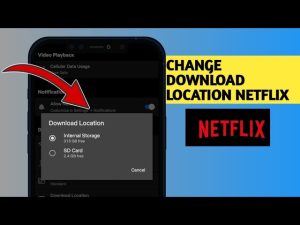Pricing your short-term rental property can feel like a balancing act—set your rates too high, and you risk losing potential bookings; too low, and you might not cover your costs, notes Specialized Management Houston team. Hosts need to be strategic and flexible with their pricing to maximize revenue throughout the year. In this post, we’ll explore how dynamic pricing can help you optimize your rental rates, attract more guests, and increase your earnings.
Understanding the Basics of Dynamic Pricing
Dynamic pricing is adjusting your rates based on various factors such as demand, seasonality, and local events. Unlike fixed pricing, where you set one rate year-round, dynamic pricing allows you to change your rates frequently to reflect the market’s current conditions. This approach helps you stay competitive in fluctuating markets and ensures that you’re not leaving money on the table during peak times.
For short-term rental hosts, dynamic pricing can be a game-changer. It allows you to charge higher rates during busy periods and adjust prices downward when demand is lower. This flexibility helps you attract more guests during off-peak seasons while maximizing revenue during high-demand periods.
Seasonal Pricing Strategies
One of the key elements of dynamic pricing is adjusting your rates based on the time of year. Seasonal pricing strategies can help you make the most of both peak and off-peak periods. During peak season—such as holidays, summer months, or local event periods—demand for short-term rentals typically surges, allowing you to raise your rates. Conversely, you may need to lower your prices during slower months to attract bookings.
For example, if your property is located near a popular ski resort, you can charge higher rates during winter when skiing is in full swing. Similarly, beachside rentals can command premium prices during summer. However, during off-season periods, when fewer travelers are visiting, adjusting your rates downward can help fill vacancies that might otherwise go unbooked.
Additionally, watch local events that can impact demand, such as festivals, conferences, or sports events. These events can create temporary spikes in demand, presenting an opportunity to increase your rates for those specific dates.
Leveraging Market Data to Set the Right Price
Successful dynamic pricing relies on staying informed about local market trends and competition. Knowing how similar properties in your area are priced can help you determine the right rate for your rental. It’s essential to strike a balance between competitive pricing and maximizing your revenue.
One way to gather this data is by regularly researching comparable listings on platforms like Airbnb. Look at properties with similar amenities, locations, and sizes to see how they’re priced during different times of the year. Additionally, pay attention to occupancy rates and guest reviews to gauge the demand in your area.
Market data can also help you avoid the common pitfall of underpricing. While it might be tempting to lower your rates drastically to attract more bookings, doing so could hurt your profitability in the long run. Instead, use data to set a competitive price that aligns with the value your property offers.
Using Technology to Optimize Your Pricing Strategy
Technology can be a powerful ally in optimizing your pricing strategy. There are various tools and software available that can help you automate dynamic pricing based on market conditions and demand trends. These tools analyze data from your local area and suggest optimal pricing strategies for your property.
For example, you can set minimum and maximum pricing thresholds, and the software will automatically adjust your rates within that range. This ensures that your prices are always competitive without requiring constant manual updates. Some tools even allow you to factor in occupancy rates, competitor pricing, and upcoming local events to make more informed pricing decisions.
Incorporating Airbnb management software into your strategy can also streamline the process of setting and adjusting your rates. These platforms often include features that help automate pricing adjustments so you can focus on other aspects of your business while ensuring that your rental is priced optimally for revenue growth.
Staying Flexible: When to Lower or Raise Your Rates
While dynamic pricing is an effective strategy, it’s important to stay flexible and adjust your rates as needed. Pay attention to booking patterns and guest demand. If you notice a sudden drop in bookings during a typically busy period, it might be time to reevaluate your pricing.
On the other hand, if your property is consistently booked, especially during off-peak times, consider raising your rates. Experimenting with small price increases can help you find the sweet spot that maximizes your revenue without deterring potential guests.
Being responsive to changes in demand is key to maximizing revenue throughout the year. Regularly reviewing your pricing strategy and making adjustments as needed will ensure that you’re making the most of every booking opportunity.
Conclusion
Mastering the art of pricing is crucial for any short-term rental host looking to maximize revenue. By adopting dynamic pricing strategies, leveraging market data, and using technology to your advantage, you can ensure that your property is priced competitively year-round. Flexibility and responsiveness to market conditions will help you optimize your earnings, no matter the season.











